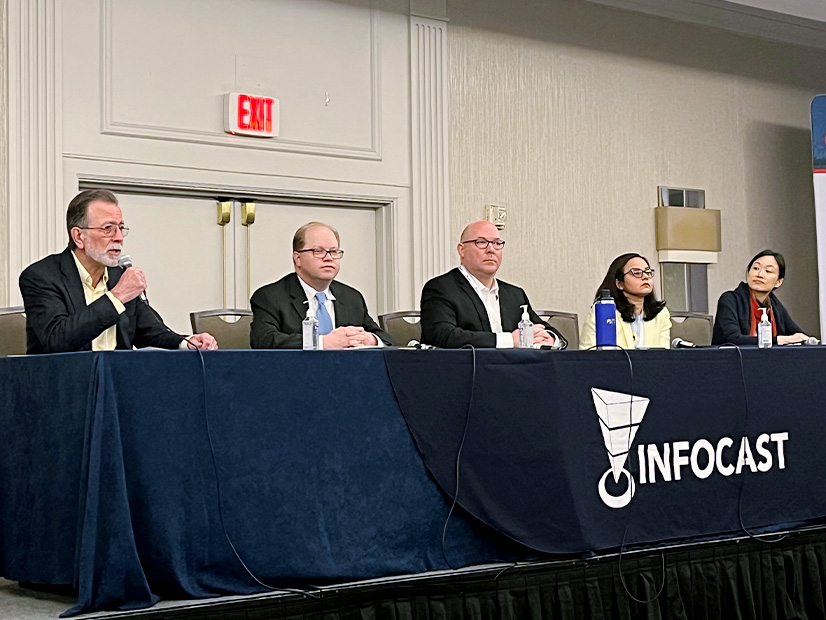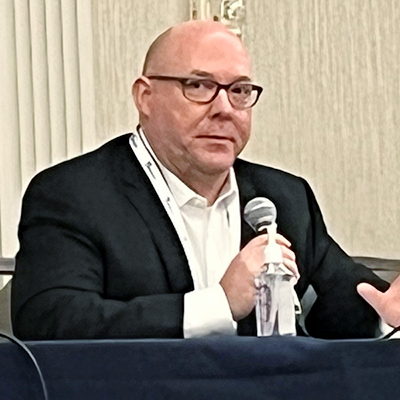
ARLINGTON, Va. — When comments are filed in August on FERC’s transmission planning and cost allocation rulemaking, one issue sure to generate controversy is the commission’s proposal to abandon Order 1000’s competition measures.
Comments on FERC’s April Notice of Proposed Rulemaking (RM21-17), which would allow incumbent transmission owners a federal right of first refusal (ROFR), are due Aug. 17, with reply comment due Sept. 19. The NOPR would allow incumbents to exercise the ROFR on regional projects on the condition that they partner with an unaffiliated company with a “meaningful level of participation and investment” in the project. (See ANALYSIS: FERC Giving up on Transmission Competition?)
Last week the Electricity Transmission Competition Coalition, a group of industrial consumers and others, asked the chairman and ranking members of the U.S. Senate Finance Committee to oppose FERC’s proposal, saying transmission competition was essential to respond to electricity price inflation. The issue also was the subject of debate last week at Infocast’s Transmission & Interconnection Summit.
FERC said it was changing course because it feared that Order 1000’s removal of the federal ROFR may be “inadvertently discouraging investment” in regional transmission. Incumbent transmission providers “may be presented with perverse investment incentives” to instead engineer local transmission projects for which they retain development control, the commission said. Regional transmission facilities subject to competitive procurements represent only a small portion of transmission investment in recent years, it said.
Commissioner Allison Clements defended the change in remarks at the transmission summit June 21.
“When you look at the record and the lived experiences under Order 1000, you see that the attempt at opening up regional transmission developments to competition had mixed results at best,” she said. “And so we were trying to find a way to mimic the impact of competition to some extent to get cost savings for customers outside of the approach that was taken in Order 1000 and faced a lot of barriers.”
She said the specifics of the new approach will be spelled out based on comments in the docket and at a technical conference Oct. 6 (AD22-8). “We are thinking about big concepts like independent transmission monitors and what role they might play relative to help managing costs,” she said.
 Erik Heinle, D.C. Office of the People’s Counsel | Jay Caspary
Erik Heinle, D.C. Office of the People’s Counsel | Jay Caspary
During a panel discussion later, Erik Heinle, senior assistant people’s counsel for federal affairs and wholesale markets for D.C., called the ROFR proposal “an unfortunate … step backwards.”
“I think we all can agree that that competitive wholesale markets have really brought enormous benefit, both to suppliers and to load. And I think it’s unfortunate, from our perspective, that we don’t use those same tools in transmission planning and bring the same benefits of competition to transmission planning, because we can see not only lower costs, but potentially better solutions to address transmission issues.
“We certainly understand that Order 1000 hasn’t worked as well as the commission hoped,” he added. “But that doesn’t necessarily mean we give up on the goals of Order 1000. Instead, [we should] find ways to double down and improve those goals.”
But Brian C. Drumm, representing Fortis’ ITC Holdings (TSX:FTS), which owns 16,000 circuit miles of transmission in the Midwest, called Order 1000 “a failed experiment,” saying competition has delayed transmission projects without bringing savings to ratepayers.
“The MISO [Multi-Value Project] portfolio in 2011 was the last substantial regional build out in MISO. And I think that’s a direct result of this Order 1000 imposition of competition and competitive bidding,” said Drumm, ITC’s director of regional policy and RTO engagement.
 Brian C. Drumm, ITC Holdings | Jay Caspary
Brian C. Drumm, ITC Holdings | Jay Caspary
Drumm said projects in MISO’s proposed $10.3 billion long-range transmission plan that will be subject to competitive bidding will take two years longer to complete than projects that are exempt. In May, the RTO asked FERC’s permission to change its process to exclude “short segments and conductor-only” work from competitive bidding eligibility (ER22-1955). (See “Competitive Bidding Question Remains Open,” MISO Makes Business Case on Long-range Tx Plan.)
“To the extent you can start building on a large scale and regional basis, you’re going to capture economies of scale that RTOs, in particular, are really well suited to deliver,” Drumm said. “But for those [projects that are competitively bid], there’s a two-year delay for them to get into service; that delay results in increased costs to ultimate consumers. … It potentially could impact the operation of the portfolio as well.”
Drumm declined to say if transmission providers deserved blame for obstructing competition.
“FERC was trying to get more productivity and efficiency, lower costs into the transmission planning of transmission projects. And ultimately, what we’ve seen is … a lack of collaboration amongst highly regulated utility entities and transmission providers that previously worked well together,” he said. “I’m not really sure of all the reasons, but I do know what the results were: This resulted in delay and increased costs. So [the blame is] kind of irrelevant.”
MIT economist Paul Joskow issued a working paper in 2019 that concluded “the experience to date is sufficiently promising to consider expanding the use of open competitive procurement solicitations for transmission projects.”
The Brattle Group issued a report the same year for independent developer LS Power that concluded that competitive solicitations saved an estimated 20 to 30% of project costs compared to traditionally developed projects. LS Power won PJM’s first Order 1000 competitive project, for upgrades to Artificial Island in New Jersey, after promising a cost cap.
“Thirty percent savings … it’s hard to say that’s a failed experiment,” said Jennifer Chen, senior manager of clean energy for the World Resources Institute. “Maybe there are places where we can compromise … but I would say we should do our very best to make this process as competitive and transparent as possible, and make sure that we are investing money wisely.”
Drumm’s comments also drew a rebuttal from Ali Amirali, senior vice president of Starwood Energy Group Global. “For those who don’t believe that [competition] was working, come talk with me and LS Power, and we’d be more than happy to show you where it is working.”
[EDITOR’S NOTE: A previous version of this story incorrectly stated that initial comments on the NOPR are due by July 18. Comments were initially due by that date when the NOPR was first approved, but on May 25, FERC granted a request for additional time, setting a new due date of Aug. 17.]

